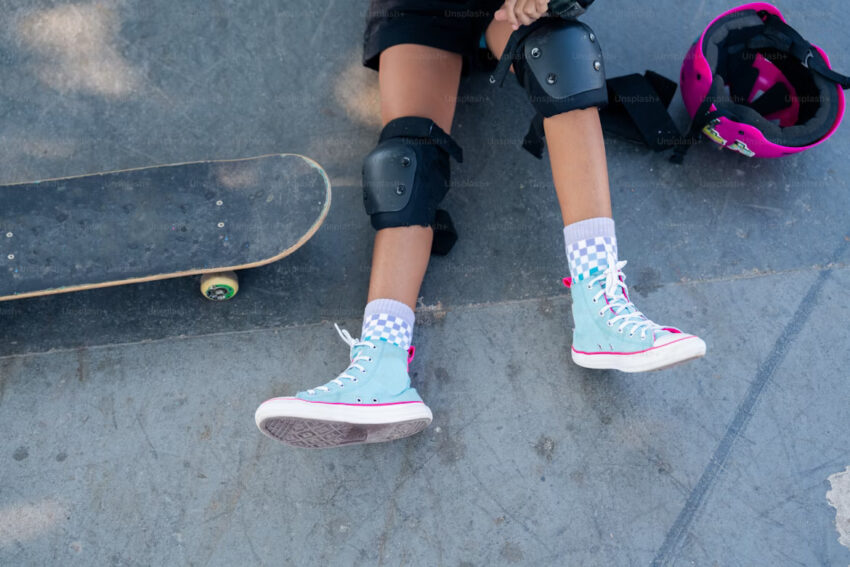Your knees are among the most active joints in your body, supporting your weight, balance, and movement every day. Whether you are laying floors, welding, gardening, or playing sports, the pressure on your knees can quickly build up. Without proper protection, this strain can cause discomfort, injuries, and long-term health problems. That is where knee pads come in: Knee Pad is a simple but effective piece of safety equipment designed to keep your knees comfortable, stable, and protected from impact and wear.
Why Knee Pads Are Important
Knee pads are essential for controlling the threat of knee injuries and guaranteeing comfort during prolonged kneeling or physical exercise. They help to prevent repetitive stress injuries such as bursitis, patellar fractures, and chronic joint pain.
Protection against Impact and Pressure
Knee pads provide padding that uniformly distributes body weight and reduces pressure on the kneecap. This is especially crucial in industries that need extended kneeling, such as flooring, roofing, plumbing, and cleaning. Knee pads reduce impact from hard surfaces, preventing direct harm and micro-damage over time.
Keeping Long-Term Damage at Bay
Joint muscles and cartilage can begin to degrade as a result of continuous interaction with hard surfaces. This might result in chronic inflammation or osteoarthritis. By using knee pads on a daily basis, you can significantly lower these risks and maintain strong, pain-free knees for many years to come.
Types of Knee Pads
Your activities, workplace, and level of comfort all influence the type of knee pad you choose. A brief summary of the most prevalent kinds is provided below:
Foam Knee Pads
Foam knee pads are lightweight and flexible, making them perfect for light interior activities, housework, and gardening. They are comfortable to wear and provide a reasonable level of protection from rough terrain and light impacts.
Gel Knee Pads
Knee pads with gel padding offer improved comfort and shock absorption. Because the gel conforms to the curve of the knee and provides support without flattening out, they are ideal for extended workdays or construction projects.
Hard-Capped Knee Pads
These pads are mostly used for heavy-duty tasks like industrial labor, carpentry, and flooring installation, including a durable PVC or rubber top that prevents abrasion and guarantees stability on uneven surfaces.
Soft Fabric or Neoprene Knee Pads
Soft knee pads are frequently used in sports like basketball, volleyball, and skating because they provide protection and flexibility without restricting movement.
Specialized Industrial Knee Pads
These knee pads are used in factories, warehouses, and mechanical workshops because they are long-lasting, ergonomic, and provide all-day protection.
How to Choose the Right Knee Pads
Choosing the best knee pads might be challenging because there are so many varieties available. Before purchasing, take into account these crucial factors:
Fit and Adjustability
Choose knee pads that have Velcro fastenings or two adjustable straps to keep them firmly in place. When the pads fit properly, they remain stable without slipping or obstructing blood flow.
Material and Padding
Different inside materials, such as gel padding, memory foam, or EVA foam, are included with knee pads. Gel pads provide greater shock resistance for demanding tasks, while foam pads are lighter and more breathable. Additional resilience against rough surfaces is provided by hard outer caps.
Work Environment
Consider your intended usage for them. For instance:
- Indoor Flooring – Gel or foam pads for tile work.
- Building or Roofing – Heavy-duty or hard-capped pads.
- Gardening – Knee pads which are made of lightweight foam.
Maximize comfort and protection by selecting pads that are appropriate for your surroundings.
Maintenance and Care Tips
Longer life and improved performance are guaranteed when your knee pads are kept clean and well-maintained.
- Clean frequently: After every usage, wipe down with a moist cloth or a mild disinfectant.
- Replace inserts: When the foam or gel inserts on certain models wear out, replace them.
- Air dry: Avoid keeping wet knee pads in confined areas as this can lead to bacteria and odor accumulation.
- Examine frequently: To ensure support and safety, check the straps and stitching for wear.
Best Uses for Knee Pads
There are so many uses for knee pads. Here are some typical applications in various fields and pursuits:
- Flooring & Construction: Keep knees safe from sharp objects and harsh surfaces.
- Plumbing and roofing: Maintain your comfort level when working on uneven or sloped surfaces.
- Gardening & Landscaping: Avoid skin irritation from gravel and dirt.
- Sports & Fitness: Protect knees from high-impact exercises, falls, and dives.
For maintenance workers, technicians, and mechanics who regularly kneel, industrial and warehouse work is crucial.
Conclusion
Comfort is only one benefit of knee protection; other benefits include long-term mobility, safety, and health. Whether you’re working on concrete floors, scaling rooftops, or caring for your garden, the correct knee pads can make all the difference.
Purchase long-lasting, properly fitted knee pads to assist your everyday activities and protect your joints for many years to come.
